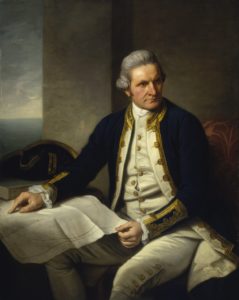
Discovery
Theories on the existence of a Southern continent date back to Greek times, but the actual discovery had to wait until the nineteenth century. The explorer James Cook captained the first recorded ship to cross the Antarctic circle in 1773, and was incredibly unfortunate not to discover Antarctica.
The South Shetland Islands were the first part of the Territory to be discovered, in February 1819 by the British mariner William Smith in his ship the Williams. The continental Antarctic landmass was not sighted until the following year (1820), by both British and Russian expeditions within the same month.
The South Orkney Islands were discovered in December 1821 by George Powell on the Dove while in February 1832, the Antarctic Peninsula was claimed for Britain by the explorer John Biscoe.
UK claim
The UK’s formal claim dates back to 1908 via the Falkland Island Dependencies Letters of Patent. It is the oldest formal territorial claim on the continent. The Antarctic Treaty puts all territorial claims to Antarctica in abeyance and provides a framework for international co-operation. The UK has no doubt about its sovereignty over the British Antarctic Territory in the context of Article IV of the Antarctic Treaty.
The permanent UK presence in Antarctica began with Operation Tabarin during the Second World War. The 14-man Admiralty expedition was led by Lieutenant James Marr and Major Andrew Taylor. They departed from the Falklands in January 1944. The mission had multiple objectives including frustrating any enemy activity in the region, strengthening British territorial claims and collecting scientific data. Bases were initially established on Deception Island, a natural harbour in the South Shetland Islands and at Port Lockroy just off the Antarctic Peninsula. After the war the bases were manned by the Falkland Islands Dependencies Survey (FIDS) which subsequently became the British Antarctic Survey (BAS) in 1962.
The British Antarctic Territory was officially established by a Statutory Instrument – the British Antarctic Territory Order in Council 1962/400. It came into effect on 3 March 1962 and constituted the British Antarctic Territory as
“…all islands and territories whatsoever between the 20th degree of west longitude and 80th degree of west longitude which are situated south of the 60th parallel of south latitude
This includes the South Shetland Islands, South Orkney Islands and the Antarctic Peninsula with a sector of the continent extending to the South Pole.
Recent developments
Following the signing of the Antarctic Treaty in 1959 the whole of Antarctica is protected in the interests of peace and science. Since 1998 the Antarctic Treaty’s Environmental Protocol has protected the continents environment. The role of science has flourished with many important developments including the discovery, by BAS, of the hole in the ozone layer.
Sources of further information on Antarctic exploration:
- UK Antarctic Heritage Trust
- Polar Museum at the Scott Polar Research Institute
- Polar Gallery at the National Maritime Museum, Greenwich.
